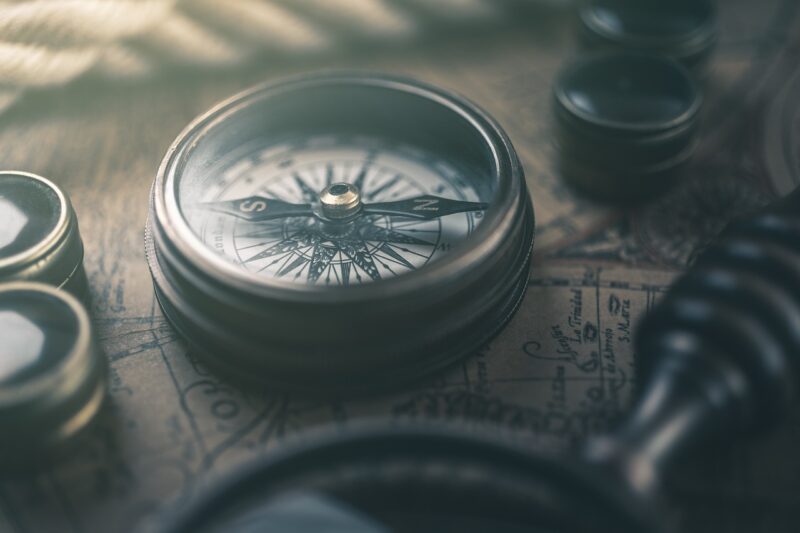How Ancient Mariners Measured Distance and Navigated the Seas
November 12, 2024

Navigating the vast, unpredictable oceans has always been a significant challenge for humans. Long before modern technology made navigation easy, ancient mariners utilized a remarkable combination of observation, simple tools, and their knowledge of the stars to traverse the seas. Understanding how they measured distance and managed to steer their vessels through the waters reveals not only their ingenuity but also their deep connection to nature.
1. The Importance of Navigation in Ancient Maritime Cultures
Throughout history, different cultures developed maritime practices that allowed them to fish, trade, and explore in distant lands. Great civilizations like the Phoenicians, Greeks, Chinese, and Polynesians relied on their navigational abilities for commercial expansion and cultural exchange.
For these ancient mariners, navigation was not merely about reaching a destination; it was about survival, exploration, and understanding the world around them. Reliable navigation methods were critical for ensuring safety, establishing trade routes, and discovering new territories.
2. Tools of the Trade: Early Navigational Instruments
The toolbox of ancient mariners was quite rudimentary compared to today’s standards, yet they utilized innovative instruments that helped them measure distance, determine direction, and gauge their position at sea.
- The Celestial Navigation System: Ancient mariners primarily relied on celestial bodies — the sun, moon, and stars — to guide their journeys. The North Star, in particular, has for ages been a reliable point of reference in the Northern Hemisphere. Mariners would memorize key constellations and use them to plot their courses during the night.
- The Astrolabe: This handheld device, used by navigators to measure the angle of celestial bodies above the horizon, allowed sailors to determine their latitude. Early versions of the astrolabe date back to ancient Greece and were adapted by Arab mariners for larger applications.
- The Gnomon: A simple yet effective tool, the gnomon served to cast a shadow in sunlight while measuring the angle of the sun’s rays. Sailors could determine their latitude based on the height of the sun at solar noon.
These instruments marked the dawn of a sophisticated navigational tradition and laid the groundwork for future maritime explorations.
3. Measuring Distance: Nautical Miles and Dead Reckoning
One of the critical aspects of navigation involved measuring distances traveled on the open sea. Ancient mariners faced a unique dilemma: how to know how far they had come ? Here are some methods they employed:
- Nautical Miles: Though the concept of a nautical mile as we know it today (approximately 1.15 statute miles or 1,852 meters) was formalized much later, ancient mariners used similar principles of measuring distances via latitudinal degrees. They would establish that one degree of latitude corresponds to approximately 60 nautical miles.
- Dead Reckoning: This is one of the oldest techniques of navigation, where sailors estimated their current position based on a previous known location, speed, and direction traveled. By continuously keeping track of their course and speed (typically measured using a log line), mariners could calculate their distance from previous waypoints.
- Log Lines: Mariners employed a method involving wooden logs tied to a rope. By throwing the log overboard while timing how long it took to drift, they could measure their ship’s speed to determine distance over time. This technique was foundational in calculating and recording hours spent at sea.
These practices illustrate how ancient mariners overcame the challenges of measuring distance without the modern technology we possess today.
4. Environmental Awareness: Reading Ocean Patterns and Weather
The ability to interpret natural signs was powerful knowledge for ancient seafarers. By understanding their immediate environment, they could enhance their navigational skills:
- Tides and Currents: Experienced sailors understood the effects of tides and ocean currents on their voyages. They would take notes on how these environmental factors influenced their navigation, allowing them to optimize their routes and timing.
- Wind Patterns: Seasonal wind patterns — such as the monsoons in the Indian Ocean — directed maritime routes and were carefully tracked. Understanding common wind directions was essential for efficiently sailing ships to their destination.
- Wildlife Indicators: Ancient fishermen and traders observed the presence of certain birds, fish, and marine life as indicators of nearby land or distinct oceanic regions, offering cues that informed their navigation decisions.
Through keen observation of these elements, ancient mariners enhanced their knowledge of the seas and improved their navigational techniques.
5. The Legacy of Ancient Navigation Techniques
The techniques developed by ancient mariners laid the groundwork for future generations, influencing maritime practices over centuries. Notably:
- Influence on Modern Navigation: Many techniques of celestial navigation and distance measurement are still taught to aspiring sailors and aviators today. The principles of dead reckoning are fundamental in both naval and aviation training, alongside advanced technologies like GPS.
- Cultural Exchange and Exploration: Through their navigational bravery, ancient mariners enabled significant explorations — including the migrations of Polynesians across the vast Pacific Ocean and the legendary voyages of the Vikings. Such eras of exchange fostered trade, interaction, and mutual understanding between diverse cultures.
- Fostering Innovation: The pursuit of better navigation spurred innovations in shipbuilding, navigation tools, and even cartography. As exploration expanded, so did the representation of oceans, landmasses, and routes on maps, showcasing an intrinsic human desire to explore uncharted territories.
Ultimately, ancient navigation techniques reflect an impressive synergy between natural intuition, keen observation, and the human spirit of exploration, setting a foundation for the marvels of modern navigation.
Conclusion
The incredible journey of ancient mariners and their navigational mastery deserves recognition and tribute. From celestial navigation to the practical measurement of distance, they displayed extraordinary ingenuity in overcoming the challenges of the sea. Their legacy continues to resonate, reminding us of humanity’s unyielding quest for discovery and exploration. By understanding their methods, we learn to appreciate the depth of maritime history and the astounding achievements of those who sailed before us.
In an age where we often take navigation for granted, let ancient mariners inspire us not only with their techniques but also with their indomitable spirit of adventure.








